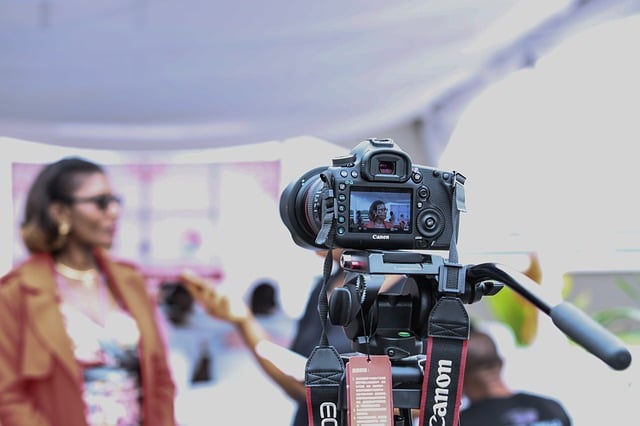What to Do After a Car Accident?: 6 Simple Steps
Michelle Wilson - November 14, 2021

It doesn’t matter if you’ve been driving for decades or it’s your first time behind the wheel; when an accident happens, adrenaline takes over. There are so many thoughts racing through your mind that you’ll likely look back on the incident as a rapid blur. Many of us struggle to get through the motions of an accident, whether it’s a major wreck or a minor fender bender.
While you likely don’t want to think about potential emergencies, preparing starts with knowing what to do in any situation. Making quick, informed, and educated decisions can protect you and your loved ones in the future. Remember the following six steps to take if you’ve been involved in a car accident to quickly get you back on the road.
Table of Contents
Stop and Secure Yourself
Failing to remain at the scene of an accident has serious criminal charges, so it’s important to stay put if you’ve gotten into an accident. Once stopped, turn the four-way emergency hazard lights on to let other vehicles know behind you that the car isn’t moving. Take a few moments to assess the situation, taking deep breaths in and out, slowly. If you’re traveling with passengers, ensure they’re safe and unharmed after the accident. Likewise, determine whether you’ve sustained any injuries from the accident.
Move Your Car
Always stop your car as soon as you’re safe to do so. If you’re in a potentially lousy location (like the middle of an intersection) and your vehicle is driveable, pull the car off to the side of the road. Ideally, use the shoulder of the road, if on the highway, or a parking lot if you’re in the city. Turn your four-way lights on and stay in your vehicle.
Call 911
It doesn’t matter who was at fault; the faster you contact the police, the quicker emergency crews can respond to the accident scene. Always call 911 after an accident if there are any injuries from the wreck (even minor ones), damages to the vehicle will exceed $2,000, or potential influence of drugs or alcohol. You don’t always have to contact the emergency services, especially if the damages are minor. If no one was injured, intoxicated, and the damages are minor, simply report the accident to the collision reporting center. This center will take statements from both parties, photos of any damage to the vehicles, and give you the report for insurance (if needed).
Take Pictures
Although it’s always better to take photos of the accident as soon as it’s happened, safety often prevents individuals from taking detailed photographs of the scene. Never compromise your safety to take pictures. Document any damages to both vehicles, including all sides of the car. If you have sustained any injuries, document those too (whether you get medical treatment or not). Photos and descriptions will help insurance companies determine who was at fault in an accident. Photographs can also help protect you from rare instances of car insurance fraud (where someone claims significant injuries from a minor accident in hopes of getting a payout).
To safeguard yourself, ask the other party for the license, registration, and insurance documents, right away. Take a photograph with your phone of the front and back of the papers. If possible, you can record any conversations between you and the other driver, particularly if they’re at fault (as conversations can legally be recorded as long as you’re a participant in the discussion).
Record Details of the Incident
The more information you have available about the accident, the better your chances of quickly resolving everything. Open up a voice recorder on your phone (or use a texting app with voice functionality). State the date, time, and vehicles involved in the accident. Record the other vehicle’s license plate number, as well as current road conditions. If possible, include your estimated speed, direction, and street you were traveling on before the accident.
Open up a weather app on your phone and screenshot the current weather. The weather app will include the date and time on the app (or at the top of your phone screen). This can help prove your case if the other driver blames it on weather or outside conditions. Write down a detailed description of the accident, keeping details of the incident only. If possible, include a physical description of the driver, including any identifiable markings, hair color, tattoos, and clothing.
Include the number of passengers in your vehicle and where they were sitting in the car. Likewise, ask the other driver how many passengers they currently have and where they’re sitting include the vehicle.
Call Your Insurance
Your insurance company is there to help you through life’s challenging moments, so don’t be afraid to contact them after the accident. You must submit a report to your insurance company within seven days of the accident, although 24 hours is preferable. Failure to provide details of the accident to your insurance provider within seven days may result in claim denial.
You’ll need to call the number on your insurance document and select the option of filing a claim. From there, give the agent your policy number, car details, and the accident description. The insurance claims adjustor will ask you all questions relating to the incident. Try to answer the questions as best you can. If you don’t know an answer, be honest. Many agents can approve the repair request with a few images or videos of the damage instead of coming to your home for an inspection. Make sure the photos are clear to make things easier to navigate.
If a police officer attended the accident scene, give the badge number, incident number, and phone extension to the insurance adjuster.
What’s the Typical Scenario after a Car Accident?

If your car is drivable, you can take your vehicle to a mechanic for further inspection. A tow truck will take your vehicle to a collision center or scrap yard if it is not driveable. Most insurance policies include a rental car that will get you back into a car quickly.
Accident blame can vary depending on the specifics and details. This means it can be anywhere from 0% to 100% your fault in a collision, depending on the findings.
Will it Affect Your Insurance?
If the insurance company finds you at fault for an accident, your premiums will likely increase. Some policies include an accident-forgiveness clause, which allows someone an at-fault accident without a premium hike. If you happen to have an at-fault accident on your file, switching providers can prove to be quite costly. Drivers are rated on a system within certain states, meaning the more claims you’ve had on your file, the lower your rating.
Most car insurance companies will go after the other insurance company for the deductible for no-fault accidents (although you may have to pay this initially). Once they receive the money from the other party, they will issue a check to you. If you are found not at fault, your car insurance rates should not be impacted. Victims of hit-and-run and those without active insurance providers should always report the accident to the police. Driving without insurance is a crime and, if caught, can result in serious criminal charges. Always ask nearby cars or businesses if they have any cameras to try and locate the drivers whenever possible.
Conclusion
While no one likes to think of what to do in an accident, having the knowledge to handle the situation is always the best approach. By spending a few minutes planning the worst-case scenario, you’ll be able to get through any situation and back on the road quickly.
Related Posts
Recent Posts
Popular Posts
Sorry. No data so far.








